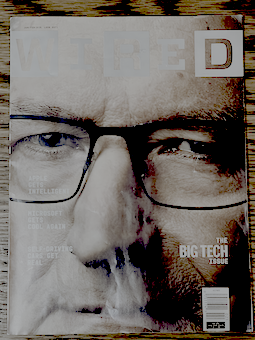Quick Thoughts on WIRED Jan/Feb 2025, The Big Tech Issue

WIRED. “The Big Tech Issue.” January/February 2025.
My Review: 5/5
As a long-time WIRED subscriber, I found this edition to be a collection of hits. Here are my quick thoughts on each of the pieces I enjoyed.
Revenge of the Softies
This is a quick 50-year review piece of how Microsoft has bought, built, and restructured its way back into the hearts and minds of software engineers. Starting mainly with Satya Nadella’s rise to CEO, this feature covers how the past 15 years have included hits like Azure, LinkedIn, GitHub, OpenAI, and Activision. There’s even a note about the Minecraft purchase being driven by consumer perception rather than a traditional business ROI calculation.
The feature catalogs plenty of missteps by all leaders—Gates, Ballmer, and Nadella—but especially now, with investments into OpenAI and Copilot, I can attest as a voice inside the industry that Microsoft has come a long way from its Borg reputation.
The Watchful Intelligence of Tim Cook
It’s hard to think about Apple and not Steve Jobs, but from the biographies I’ve read about him, Jobs set out to create a company that would outlive himself. To a large part, it seems Tim Cook has succeeded in continuing the longevity of Apple. This interview primarily focuses on what Apple has planned for AI and the Apple Intelligence roadmap.
I can’t say that there was anything earth-shattering in the interview itself, other than revealing how Tim Cook can be very brief in response to a topic he doesn’t want to elaborate on. Cook and Apple seem to continue to pursue AI on their devices via dedicated chips, which I think is the most compelling future for containing the costs of large language models for everyday use.
The New Cold Warrior
This was practically a miniseries plot that covers the rising investments China has been making into becoming self-sufficient with advanced chip making and technologies, and how one government administration official, Jake Sullivan, has worked to bring awareness to the issue. The United States is no longer able to use its export controls to drive behavioral changes in the world, and with more conflict in the world, investing in our own capabilities is critical to long-term national security and advancements.
This also dovetailed with the other feature story on getting the CHIPS act passed and increasing domestic investments. The world may be flat, but geopolitical ambition is very much alive.
Honorable Mentions
Move Slowly and Build Things
If ever the power of one voice and one email could be seen in a local community, the location of a CHIPS plant in Ohio is traced to a Lorain resident. This short feature covers the on-the-ground impact of the CHIPS act in bringing construction and manufacturing to the Midwest. Reading this after the “The New Cold Warrior” really highlights the importance of maintaining our own regional capabilities.
Far from an isolationist argument, the article focuses on the practicality of sourcing things as simple as protective equipment like masks. I think that during times of crisis, any government’s sovereign mandate is to its people, so we shouldn’t be surprised by those same governments prioritizing their domestic capabilities at home during global catastrophes. An ounce of prevention—domestic investment—is worth a pound of cure.
Follow That Car
Here, the writers followed Waymo cars to get a feel for the technological progression. Putting aside that mass transit and cities designed to be carless are the best proven antidotes to congestion, the key takeaway is that Waymo can get people where they need to go without (gasp) the labor of a driver and the anxiety of putting two strangers together in a car.
The Inside Scoop on Dessert Tech
I knew that air content in ice cream is what distinguishes, say, “premium” from “light,” and that gelato is much denser. What I didn’t know is how the complex chemistry and manufacturing processes come together to make this seemingly simple, delightful treat. Allegedly, “heat-shock-resistant ice cream” might be on the horizon, just in time for summer.
Copycats (and Dogs)
This was a look at how far the pet-cloning business has come. Honestly, it’s a little terrifying to think there is a waitlist of people paying ~$50k for a genetic clone of their pets, but to each their own. There is a glaring omission of what happens to the cloned littermates; it seems implied that only one is selected and reunited with the client. There are obviously no guarantees on personality.
Date Read
2025/01/12
Significant Revisions
- Jan 18th, 2025 Originally published on https://www.jsrowe.com with uid 6E76FAA2-700B-43FC-8AC0-17024CC96131
- Jan 13th, 2025 Draft created